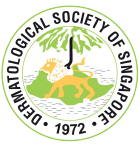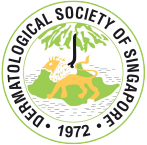Global Dermatology Contributions from WCD2023 Ambassadors
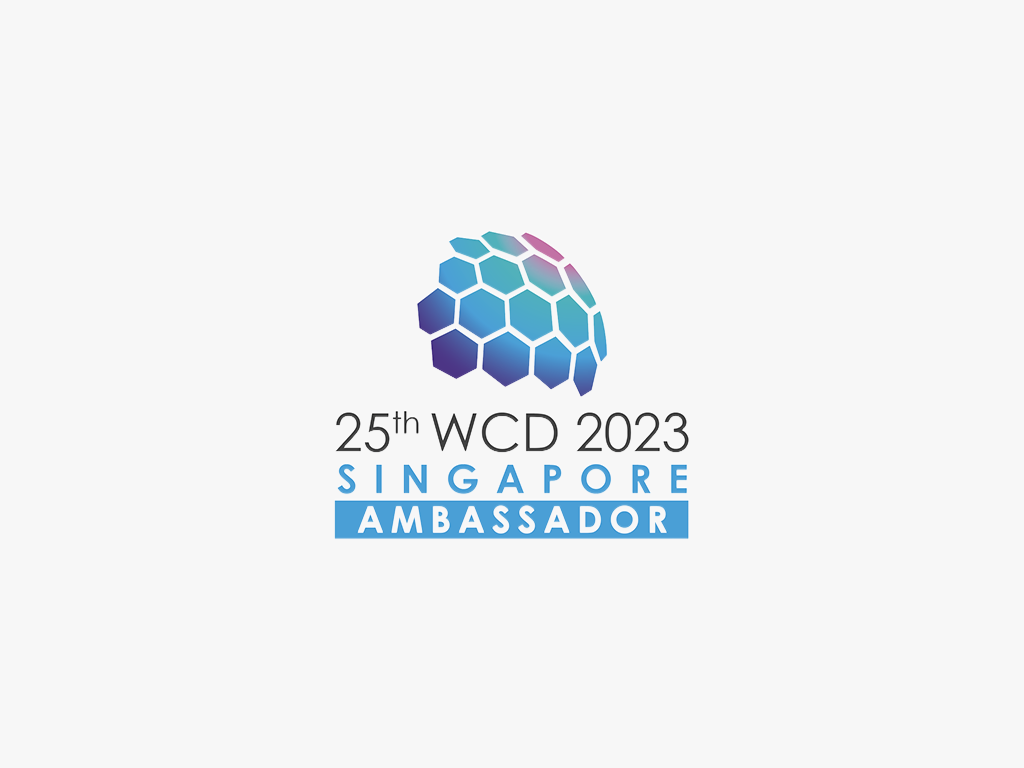
Collection of articles about dermatology from all over the world. Dermatology beyond borders.
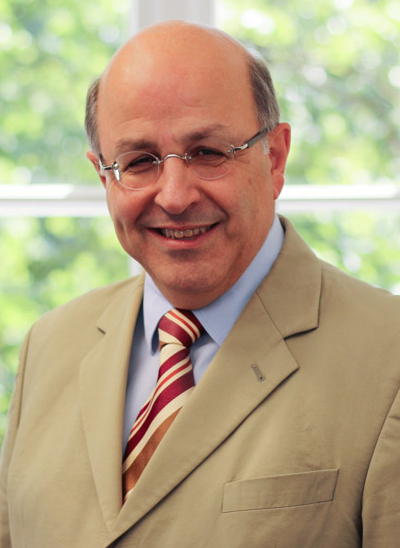
Prof. Dr. med. Prof. honoraireDr.h.c. Christos C. Zouboulis
Departments of Dermatology, Venereology, Allergology and Immunology, Dessau Medical Center, Brandenburg Medical School Theodor Fontane, Auenweg 38, 06847 Dessau, Germany. – Phone: 49-340-5014000; Fax: 49-340-5014025 -E-mail: christos.zouboulis@mhb-fontane.de; ORCID iD 0000-0003-1646-2608
Current relations of Singapore and Germany on the occasion of the WCD2023
Been honoured to be selected as a WCD2023 ambassador of Germany, I looked back at my recent visit to Singapore as an invited lecturer at the 3rd Singapore international Conference on Skin Research, held in Biopolis in 2018. Biopolis is a 265,000 m² futuristic campus for biomedical research and development activities and consists of ten research buildings, a 480-seater auditorium, four 250-seater lecture theatres, and 13 meeting rooms designed by world-renowned architect Zaha Hadid.
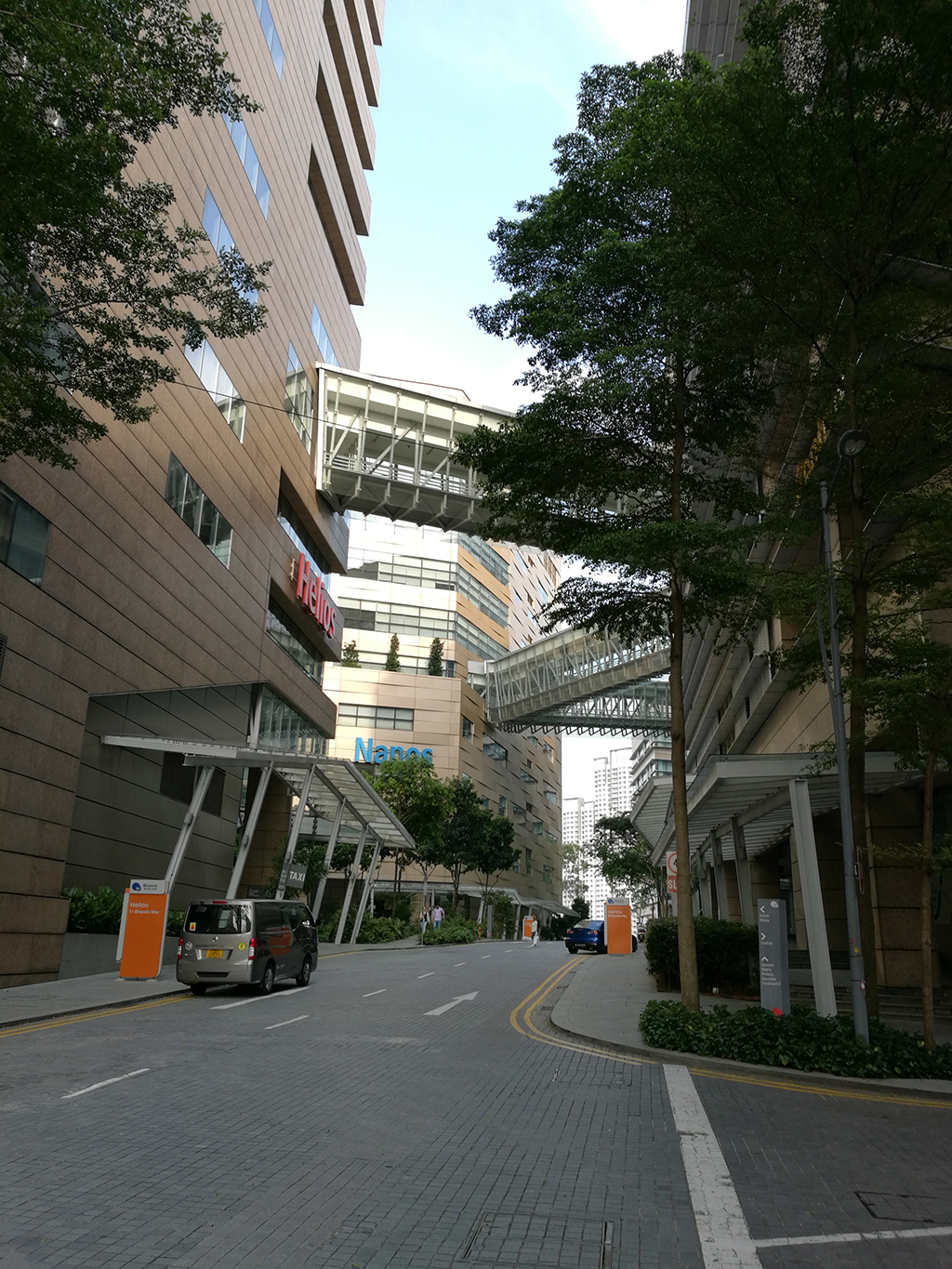
Figure 1
Its construction started in June 2003 at an approximate cost of over 400 million Euro. The buildings are named Nanos, Genome, Helios, Chromos, Proteos, Matrix, Centros, Neuros, Immunosare and Nucleos (Fig. 1). They are connected by glass bridges, pedestrian walkways and self-driving electric busses.
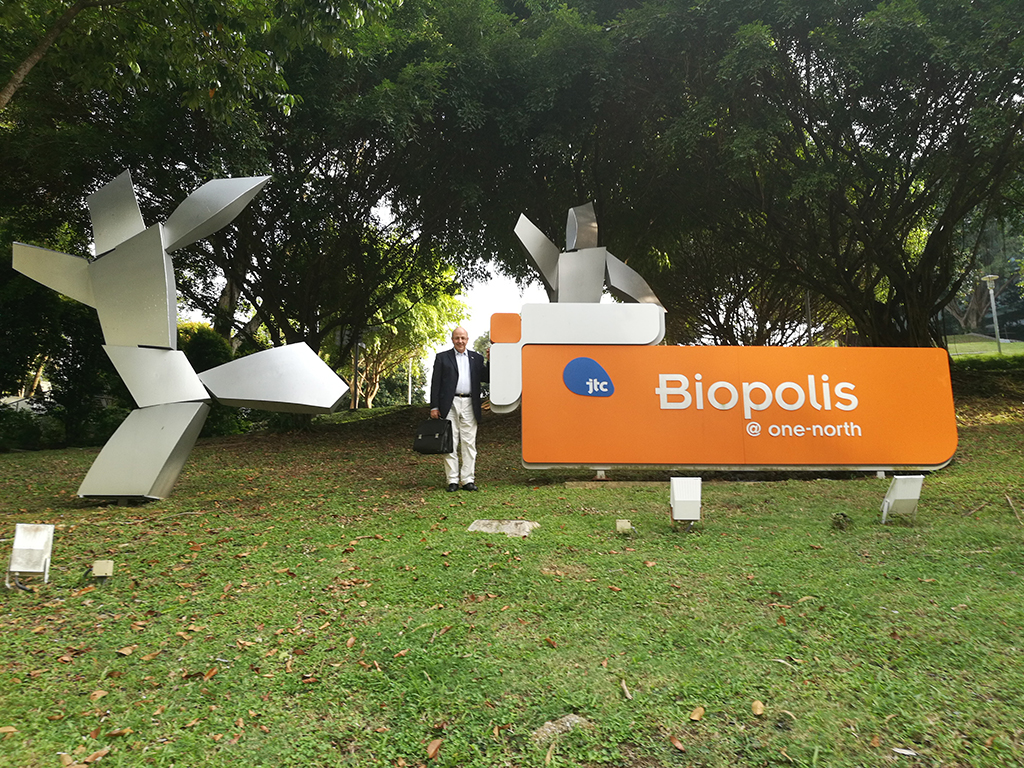
Figure 2
Biopolis is home to one of Singapore’sleading research institutions, A*STAR, and located at One-North in Buona Vista (Fig. 2), in close proximity to the National University of Singapore, the Nanyang Technological University (NTU), the Singapore Institute of Technology, the National University Hospital, the Singapore Science Park, and Fusionopolis. This infrastructure and its ecosystem make Biopolis a scientist’s dream and arereason enough to visit Singapore.
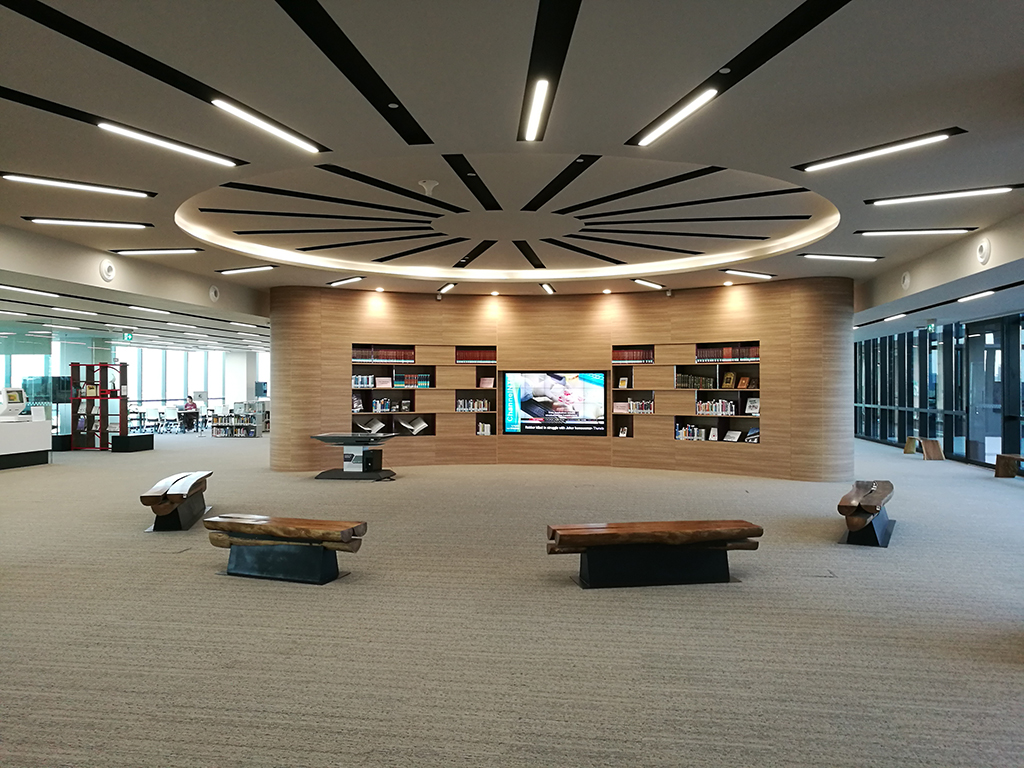
Figure 3 This is LKC medicine’s Library on the 20th floor of the Clinical Sciences Building. In Novena.
The investments in education and its importance in Singapore can also be experienced by visiting other educational buildings, including the Medical University with its almost completely digital library at the building top (Fig. 3) and the fact that the Ministry of Health is located within the campus (Fig. 4).
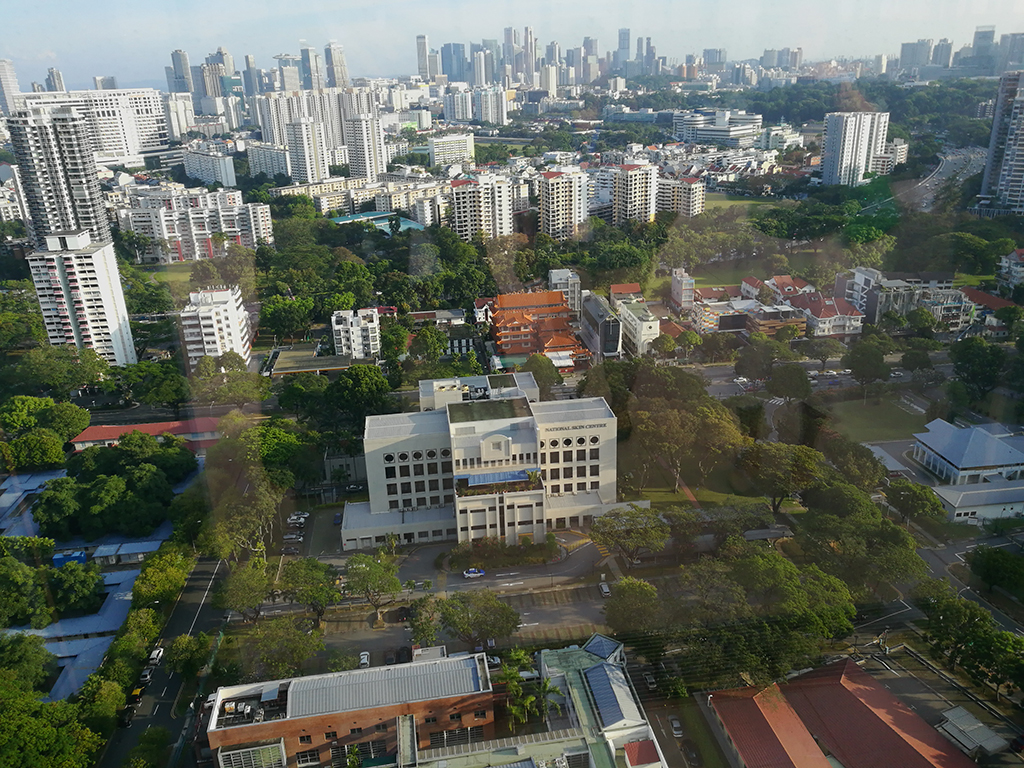
Figure 4
How can Singapore afford these costs for medical education and research? It is interesting to compare corresponding data from Singapore and Germany, which leads to an astonishing result: Singapore manages better health services than Germany with fewer physicians and hospital beds, higher individual annual income and much lower taxes! (Table 1).
Table 1. Comparison of Singapore and Germany (https://www.laenderdaten.info/laendervergleich.php?country1=SGP&country2=DEU)
| Parameter | Singapore | Germany |
|---|---|---|
| Physicians/1000 inhabitans | 2.31 | 4.21 |
| Hospital beds/1000 inhabitans | 2.49 | 8.00 |
| Average age in years | 35.6 | 47.8 |
| Life expectancy (males/females) in years | 81 / 86 | 79 / 83 |
| Diabetes mellitus in % | 5.5 | 10.4 |
| Smokers in % | 16.5 | 28.0 |
| Unemployment in % | 4.1 | 3.8 |
| Inflation rate in % | -0.18 | 3.14 |
| Life expenses | 84.2% compared to Germany | |
| Median annual income | 46436 € | 40137 € |
| Taxes in % | 21.0 | 48.8 |
| Corruption index (100 is best) | 85 | 80 |
Therefore, it would be interesting for Germany to cooperate with Singapore in the medical, biology and biochemistry fields. Germany and Singapore celebrated the 50th anniversary of German-Singapore relations in 2015 (https://de.wikipedia.org/wiki/Deutsch-singapurische_Beziehungen), which were established immediately after Singapore’s declaration of independence in 1965. An important point was the “German-Singaporean Declaration” in December 2005, which was intended to intensify cooperation in economic and cultural fields. Indeed, many German institutions have developed collaborations with their counterparts in Singapore, but only a few of these are in the fields of medicine and biology. Since 1995, the German Centre Singapore has been supporting German companies, such as Siemens, Infineon, Bosch, Bayer, BASF, in entering the Singapore and Southeast Asian markets. However, the medical/biology sector still plays a minor role in the cooperation (https://www.kooperation-international.de/laender/asien/singapur/zusammenfassung/ueberblick-zur-kooperation-mit-deutschland/).
The German Federal Ministry of Education and Research (BMBF), the German Research Foundation (DFG) and the Max Planck Society (MPG) provide funds for exploratory and networking activities in the field of production technologies, which are supported together with A*STAR. Eighty-four official partnerships between Germany and Singapore are ongoing, among them 54 cooperative projects of German with Singaporean universities. The German Institute of Science and Technology (TUM Asia) founded by the Technical University of Munich (TUM) and the National University of Singapore (NUS) in 2002 was the first independent foreign subsidiary of a German university. TUM Asia now offers a growing number of courses with double degrees up to doctorates as part of the TUM CREATE campus presence. The project “Towards the Ultimate Public Transport System” has currently been co-financed (2016-21) by the National Research Foundation Singapore (NRF) with 60 million Euro and involves the NTU and a number of German companies.
These are, indeed, impressive activities, but it is time to include more medical sciences projects in the future plans of Singapore-German scientific cooperation.
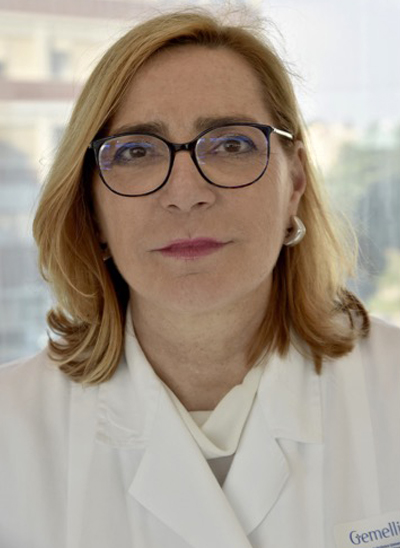
Ketty Peris, WCD Ambassador from Italy
THERAPEUTIC ADVANCES IN BASAL CELL CARCINOMA
Basal cell carcinoma (BCC) is the most frequent skin cancer representing about 75% of all skin cancers in fair-skinned adult patients.Worldwide incidence is continuously increasing over time. Therapeutic management of BCC sets three principal objectives: tumour resolution, acceptable aesthetic results and functional preservation.
Many techniques have been developed and are currently approved. Surgery (standard excision or micrographic surgery) represents the standard treatment for most BCCs since it enables the best curative results and the possibility to histologically verify the total excision of the lesion. Radiotherapy should be considered in patients for whom surgery is not indicated and it might also be recommended as a palliative treatment for painful or bleeding tumours. Topical treatments should be used in superficial low-risk BCC, they are useful to reduce the scars and are represented by imiquimod, topical 5-Fluorouracil, photodynamic therapy and cryotherapy. (Peris et al. 2019)
Targeted therapies have been developed for locally-advanced (la) and metastatic (m) BCC. Two molecules targeting SMO protein (SMO inhibitors) have been developed: vismodegib, indicated for both laBCC and mBCC at a dose of 150 mg/day, and sonidegib, indicated for laBCC at a dose of 200 mg/day (Fig.1). In the ERIVANCE study, 60% of laBCC patients treated with vismodegib 150 mg/die had an objective response and 49% of mBCC patients had an objective response. Sonidegib showed a similar objective response rate for laBCC (from 56% to 71%). Adverse events are similar with both molecules and the most frequent are muscle cramps, dysgueusia, weight loss, hair loss. (Peris et al. 2019)
Current research goals aim for improving response to treatments in laBCC, mBCC, and other difficult-to-treat BCCs, particularly in patients with primary or acquired resistance to SMO inhibitors, and for limiting adverse events, which can often lead to treatment discontinuation. (Herms F et al, 2021) As BCC is mostly a local disease, several intratumoral injectable molecules have been investigated with the aim to limit the number or intensity of adverse events, while improving the concentration of the cytotoxic agent within the lesion. Among them, ASN-002 is an intralesionally administered modified adenovirus which promotes interferon gamma production thus stimulating the immune system to attack the cancerous cells and reduce the size of or eliminate the BCC. TalimogeneLaherparepvec is an oncolytic, recombinant herpes simplex type-1 virus encoding the human cytokine granulocyte-macrophage colonystimulating factor (GM-CSF) with potential immunostimulating and antineoplastic activities. Doxurubicin, a cytotoxic anthracycline antibiotic approved for the treatment of many cancers, is under investigation in the form of a tip-loaded dissolvable microneedle array, allowing the topical delivery of doxorubicin directly to the lesion at lower concentrations. (Herms F et al, 2021)
Topical treatments for low-risk BCC show a good efficacy, but side-effects are frequent, so new topical molecules targeting BCC specifically are under investigation. Topical itraconazole has currently been evaluated. Patidegib is a SMO protein topical inhibitor that demonstrated activity in patients with BCC. Resiquimod is an immune response modifier, which may induce greater responses than imiquimod.
Advanced BCCs thatrelapsed or were intolerant to targeted therapy have been included in the phase 2 study with cemiplimab, an anti-PD1 monoclonal antibody. The objective response rate was 31% with a median follow-up of 15 months, and, at one-year, 85% of responses were ongoing. Other anti-PD1 therapies are also being evaluated such as pembrolizumab and nivolumab, however trials are still ongoing. (Stratigos AJ et al. 2021)
REFERENCE
Peris K, Fargnoli MC, Garbe C et al. Diagnosis and treatment of basal cell carcinoma: European consensus-based interdisciplinary guidelines. ur J Cancerv. 2019 Sep; 118:10-34
Herms F and Basset-Seguin N. Emerging drugs for the treatment of basal cell carcinoma. Expert OpinEmergDrugsv. 2021 Mar;26(1):17-26.
Stratigos AJ, Sekulic A, Peris K et al. Cemiplimab in locally advanced basal cell carcinoma after hedgehog inhibitor therapy: an open-label, multi-centre, single-arm, phase 2 trial. Lancet Oncol. 2021 Jun;22(6):848-857.
FIGURE 1. Multiple BCCs in an 89-year-old woman affected with Gorlin-Goltz syndrome. A) nodular, ulcerated BCCs on the right nasal fold, chin region and upper lip and B) multiple superficial BCCs on the vertebral region. Efficacy after 6 months of treatment with sonidegib 200 mg/die. C) complete healing of the BCCs on the face and D) partial re-epithelization of the multiple BCCs on the vertebral region.
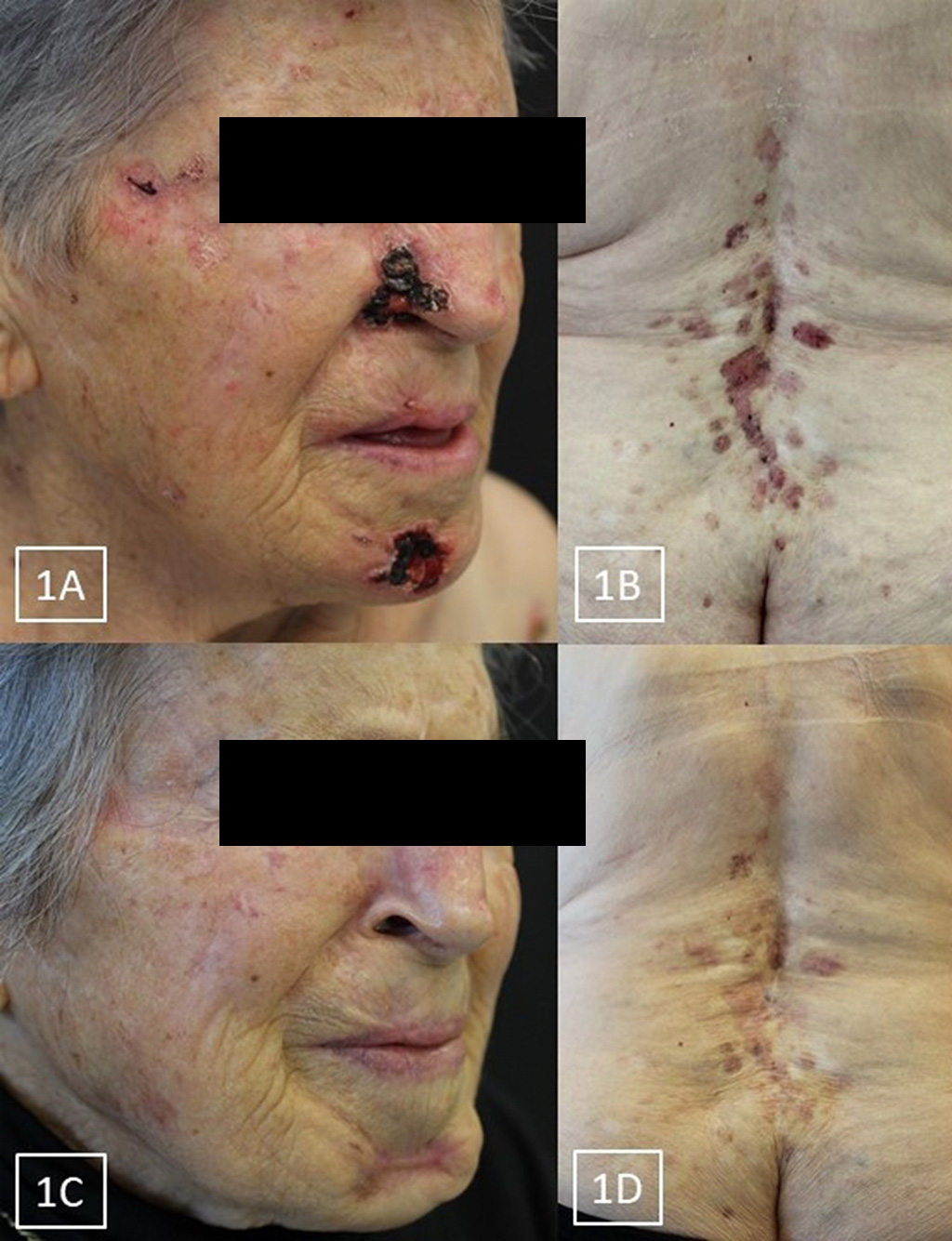
FIGURE 2. Pigmented superficial BCC in a 65-year-old man. A) clinical picture and B) dermoscopic picture. Efficacy after 6 weeks of topical treatment with imiquimod 5%. C) complete healing of the BCC, clinical aspect and D) dermoscopic features.
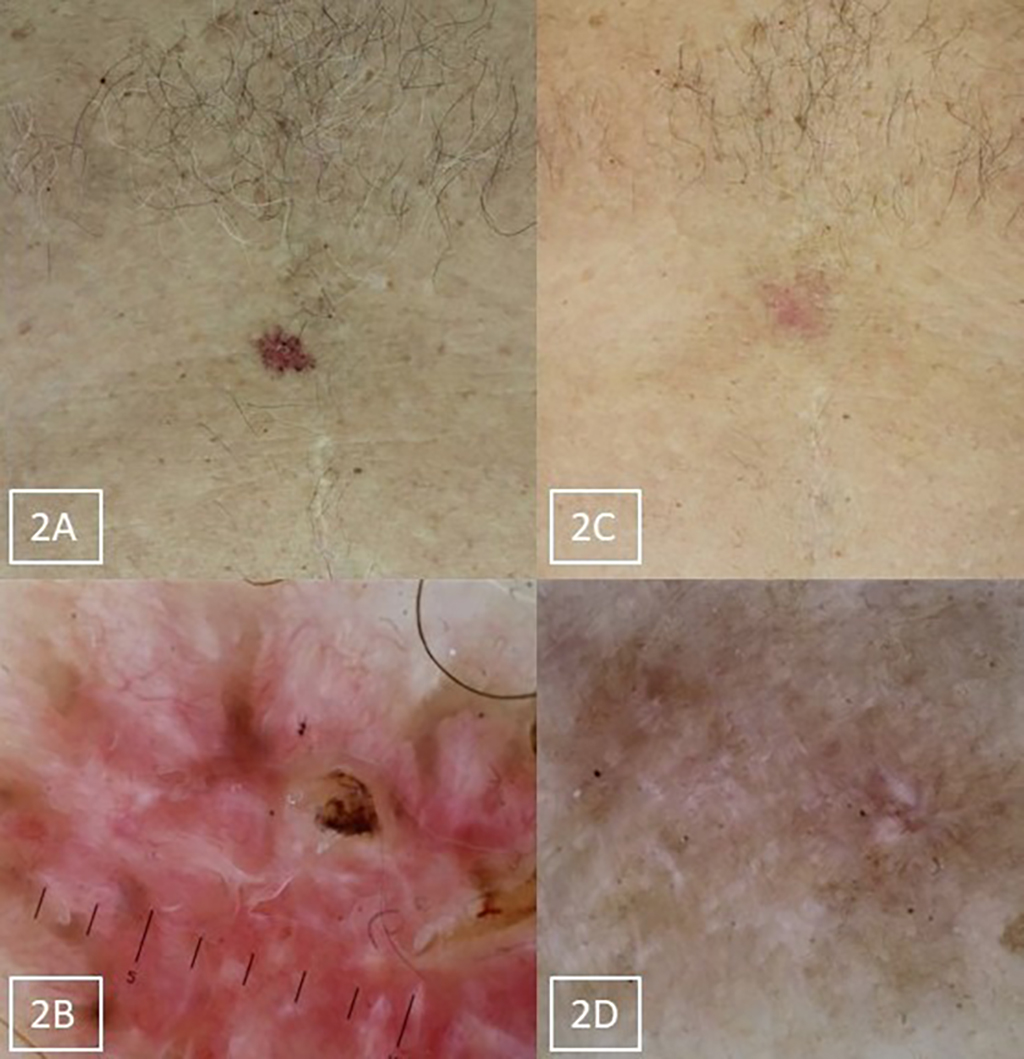
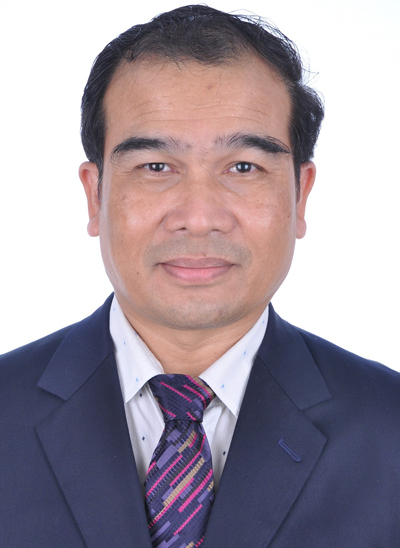
Prof. Dr.MeySithach
Head of Dermatology Training
University of Health Sciences
Phnom Penh, Cambodia
Dermatology Training in Cambodia during the COVID-19 pandemic
In 2005, in cooperation between the University of Health Sciences (UHS) in Phnom Penh, the French Cooperation in Cambodia and the German Centre for International Migration and Development, but later the Else Kroener Fresenius-Stiftung, Germany being the principal donor, a Diploma Course Dermatology was initiated. With a duration of 18 months and 10 attendants each, the training was composed of 10 modules including theoretical and practical training. While participants were Cambodian general practitioners with an interest in dermatology, lecturers came mostly from Germany, France, Switzerland and Cambodia. From 2005 to 2013, 5 courses with 50 graduates were organized.
In order to align with international standards, it became clear that the (very successful) diploma course would have to be replaced by a full specialization in dermatology. The program takes 4 years: 1-year general medicine, 2 years practical and theoretical dermatological training in Cambodia and one-year practical training in Cambodia or abroad. From 2015, lecturers from the USA, Singapore, Australia, UK and Austria have been involved in the training of Dermatology in Cambodia.
France and Germany support Clinical Dermatology Training with short term (3 months) and long term (one year or more) practical attachments. From 2018, regional countries (Singapore, Indonesia and Vietnam) have started tosupport the Clinical Dermatology Training. In 2018 and 2019, ILDS (IFD) supported some living cost of our residents who are trained outside Cambodia. IFD is supporting also for Surgical Dermatology Hand-on training.
From 2020 Cambodia and the world have been faced with the COVID-19 outbreak. The number of affected people in Cambodia was still low at that time. Our government, especially the University of Health Sciences, allowed us to givelectures in the classroom. Only a few volunteers (from Austria and Germany) were able to come to Cambodia to lecture. To complete our plan for 2020, lecturers from the USA, Germany and Singapore gave their support with Zoom meetings and recorded lectures. In 2021 only Zoom lecturing was available. Clinical Dermatology Training has mostly been put on hold since 2020, due to the pandemic. Meanwhile, France still offers a post for one year every year. Recently, the French Society of Dermatology has been organizing virtual training for residents and dermatologists in Cambodia. The course ran from December 2021 to June 2022 with 4 modules.
In 2021, Singapore organized 2 important virtual conferences. Paediatric Dermatology organized by KK Women’s & Children’s Hospital and the NSC Update in Dermatology and Venereology 2021. Both conferences have offered free registration and special prices for residents and dermatologists from Cambodia.
We are very appreciative for the cooperation and support from all parts of the world to help in developing dermatology in Cambodia.
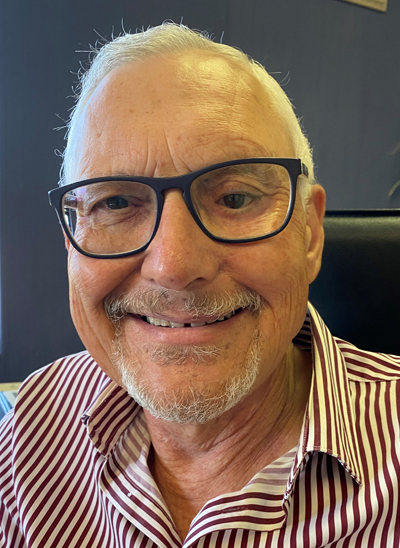
Jonathan Smith
President
Dermatology Society of South Africa
6 September 2021
Atopic Eczema Support Group – South Africa
The lifetime prevalence of atopic eczema has increased markedly in South Africa (15,5 % in 1995 to 26,2 % in 2002).
Due to a deficiency of dermatologists (we have 210 dermatologists servicing about 57 million people) as well as the fact that many patients cannot afford the services of a dermatologist in private practice and our government dermatology departments havelong waiting lists, the specific needs of patients with atopic dermatitis have not been adequately met as they require enough time to be counselled regarding all aspects of the condition.
One of our younger dermatologists, SurethaKannenberg, who spends time in government hospital/university practice as well as private practice in Cape town, recognized this need and started an Atopic dermatitis Support Group in 2017. This started with quarterly meetings at a local hospital where she would give a quick and simple overview of the disease and then a demonstration of the wet wrap technique.
This was followed by a question-and-answer session. With the advent of Covid-19, these meetings could not continue and a new strategy had to be implemented.
At the same time, one of my patients wrote me a long dissertation about the “E” of Eczema – the Emotional impact that affected his self-confidence, emotional state, work situation and his relationships. It shook me to the core and I realized that, even though I was providing him with state-of-the-art dermatological care, I was not meeting all his needs. He needed to be part of a support group and share his experiences with others.
I introduced him to Suretha and together they created the Atopic Eczema Support Group – South Africa (a closed group) in August 2020. As they had no funding, they chose Facebook as their media platform as it was free of charge and has a huge reach.
At present they have 789 members, mostly South Africans, but also some abroad.The moderators are Suretha, my patient with severe atopic dermatitis, the secretary of the Allergy Foundation of South Africa and a social media expert.Suretha places posts on general measures and new developments as well as answering questions.
They emphasize psychological support of patients as well as for their care givers.
With support from a pharmaceutical company, they have streamed live sessions that have been very well received. They have especially helped atopic dermatitis sufferers to navigate the Covid-related eczema waves – involving the hands and eyelids. All the administrators constantly watch for social media trolls who post spam – a hectic job.
According to my patients, this support group has filled an important gap in our holistic management of atopic dermatitis.

